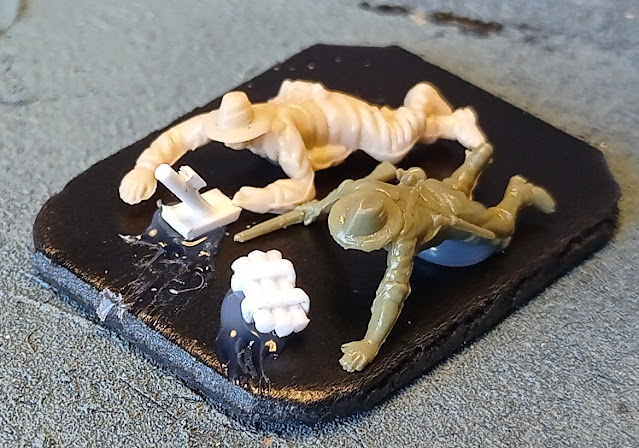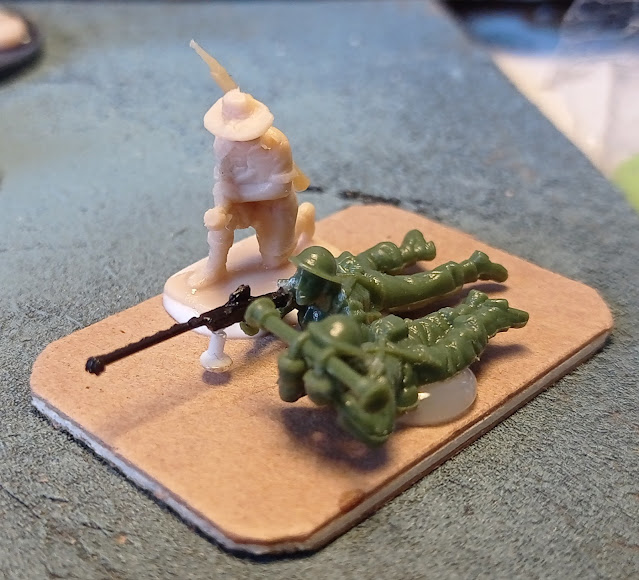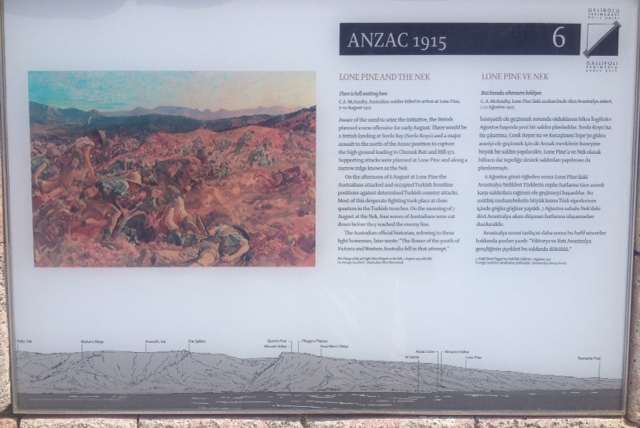I´m almost 100% sure that Peter Jackson must have played in his younger years with the Airfix US WW1 infantry thinking they could give the New Zealand figures for Chunuk Bair and all the actions of the New Zealanders at Gallipoli in 1915. This is of course before he became very rich and being able to order his own thousands of Perry beauties in 54mm.
Years ago I amassed a few boxes of Airfix US WW1 infantry thinking to cut off their heads, place some brodie helmets and sending them helping win the war in the Western Front. Then, almost 20 years ago, Hat and Imex made boxes filled with helmeted US infantry and the Airfixes quickly became obsolete. So these boxes were cornered in the stash and their prospects of a grim future were quite real eventually finishing in the hands of kids of about 10 or 12 who only know how to play with cell phones! My goodness, what a way to go!!

When I started this Gallipoli series I quickly found the Airfix US to be useful for the New Zealanders. In fact only the Wellington battalion had the Lemon Squeezer hat but I placed it in all four battalions as this hat became a symbol for Kiwi soldiers all along the 20th century. The hat depicts Mount Taranaki and has a khaki and red puggaree around it. The New Zealanders uniform was in fact a greener tone than this brown khaki (Vallejo English Uniform) but if you decide to use, say, the British figures as more New Zealanders in a skirmish game, you can have a more coherent looking large unit. In fact the same logic applies to the Australians as all these countries had full or partial bits of the British uniform making all Dominion units in the campaign interchangeable if the same khaki remains.

Lieutenant Colonel George malone is one of the heroes of the campaign and the Co of the Wellington Battalion. He was also the introducer of the Lemon Squeezer hat in the Wellington battalion, which later was adopted in 1916 by the full 1st NZ infantry division. Strangely I could not find any picture of Malone with his hat of adoption at Gallipoli as he always shows in the British peaked cap. The figure used for him is the Airfix British officer with the sword heated and cut until a revolver shape was obtained and scabbard taken out. I didn't take out the full head but only the hat due to the lovely moustache presented on this figure, ideal for George Malone. Then a Lemon Squeezer was super glued. Malone died at Chunuk Bair on the 8th of August after leading its battalion in an impressive dawn assault that conquered the position. Initially his orders were to attack in broad daylight with the rest of the brigade, which he refused only to prove himself right a few hours later.

Even so there are a few pictures of him using the Lemon Squeezer as this one taken in Egypt while the Wellington battalion was training. Note the swords quickly discarded by the officers at the front. In my miniature he is leading the Brigade which simply was not true as he was battalion commander, the brigade Co being Brigadier General Francis Earl Johnston, someone of much inferior fame. In the fantastic Peter Jackson/Perry brothers diorama of the attack on Chunuk Bair, Johnston´s figure is seating with his hands on the head not knowing what to do.
The Airfix box has no MMGs and only a few Chauchats in a strange bipod, useless for the Kiwis.
I found four Airfix 8th Army Vickers tubes (only one had its tripod ) and quickly some plastic tripods were made in plastic and glued with Hot Glue and Super Glue. The operators are for the No 1 the figure firing the grenade launcher (useless here as the weapon was only introduced in 1916) and the No 2 is the one on hold with the rifle close to his body. No3 is the laying down figure with no changes. At the beginning I was thinking to cut the arms and replace them all with GreenStuff ones but an usual attack of laziness forced me to use the arms as they were just changing slightly its position with some heat. In the end the result is not that bad.
The riflemen all got plastic bayonets and backpacks. The uniform was the Territorial model 1912 and, with all that red was considered 'extravagant' and replaced after the Gallipoli campaign.
The US cartridge belt was not disguised and simply painted as part of the NZ/British 1908 webbing set.
The backpacks were made from Milliput and glued with super glue. All these extra parts, backpacks and bayonets, stay nicely on the soft plastic if first super glued, then painted and finally varnished.
Next: my own Fort Capuzzo in WW2.








































.jpg)














